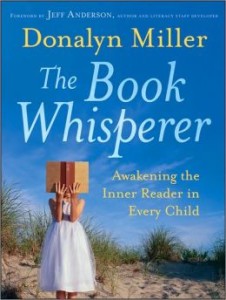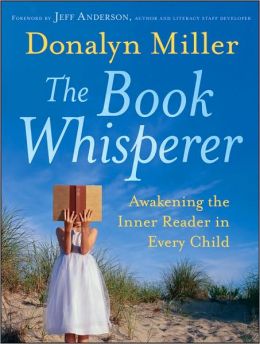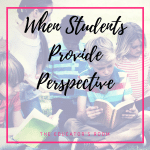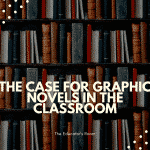The Book Whisperer: Awakening the Inner Reader in Every Child
Author: Donalyn Miller
Publisher: Jossey-Bass, 2009

As with most teachers, summer gives me the chance to finally read the stacks of books that have piled up in every nook and cranny of my house. One of the books I looked forward to reading this summer was The Book Whisperer: Awakening the Inner Reader in Every Child, by Donalyn Miller. This is Part I of my review of this book and what I have learned from it.
The premise of the book is that to create passionate, life-long readers, teachers must create a learning environment that fosters and nurtures independent reading. Not the ten or so minutes of D.E.A.R. time we try to squeeze into our literacy block, but rather, to restructure our literacy instruction to intentionally carve out as much time as possible to let kids read. As a side note, if you are a Reader’s Workshop fan or if your teaching has been inspired by the research of Nancie Atwell (In the Middle), you will really appreciate this book.
What I want to share with you today are some of the “nuggets” I have taken away from my reading of this book so far. For years, I have used the research of Atwell, Allington, Wilhelm, Routman, et al, to support my plea for teachers to stop the barrage of worksheets, journal entries, quizzes, tests, and book reports for every.single.book kids read. We don’t need to work kids to death when reading a book. We don’t need to develop a beautiful book or novel unit that is crammed with pages and pages of written work for students to complete. And, with my reading of The Book Whisperer, I have found yet another researcher and more impressive, a classroom teacher, who begs us to change our ways if in fact our goal is to motivate and create life-long readers and not just effective test-takers.
Here are some of the “nuggets” from my reading of chapter one:
· Although this book is geared toward middle-level teachers (the author is a sixth grade ELA and Social Studies teacher), much of it can be adapted for early and intermediate elementary grades.
· Miller explains and details how her students achieve her expectation that they read *40* books a year.
· Miller cites researcher Stephen Krashen who identified fifty-one studies that “…prove that students in free-reading programs perform better than or equal to students in any other type of reading program” (p .3).
· An effective literacy program focuses on engaging students, not writing “pretty” novel units.
· Students’ goal: read for pleasure, not to complete endless activities. Let me clarify: this does not mean that students never respond to their reading, complete vocabulary tasks, or are not held accountable for their reading, comprehension, and learning. Miller delves deeply into this topic later on in the book including preparing students for state tests.
· Implement a workshop approach to reading and writing that works for you and the needs of your students. Students should spend the majority of their class time reading and writing independently.
· Allow for individual choice with expectations.
· The classroom library is paramount and powerful if we are to guide our students toward developing and internalizing a love for reading. As for me, although I loved having a Smart board in my classroom, I would rather have an extensive classroom library!
· Listen to what students need instead of us teachers telling them what they need. Offer students choice in what they read and you have instant buy-in. Miller shares that self-selected books empower and encourage students, it develops self-confidence, and gives control- all in the name of independent learners. Reading choices should not always be dictated by the teacher. Gone are the days of everyone reading the same novel at the same time throughout the year.
· Choosing not to read isn’t discussed with students and it is not an option.
· View each student as a reader no matter their reading level.
· Students need to learn how to select books for themselves instead of being a passive learner and relying on the teacher.
We need to take a long, hard look at how we structure our literacy block and reflect on how much time students are actually reading independently in our class. Are teachers spending more time talking than students are reading? Are teachers spending more time on pre-reading activities than students are reading? Are teachers giving students “busy work” or more work, albeit legitimate tasks, for early finishers, or are they allowing students to read independently if they finish required work early?
“A trail of worksheets from a teacher to their students does not build a connection with readers; only books do that”. (Miller p.4)
In Part II of this review, I will share what I have learned about the types of readers and reading freedom.
Disclaimer: This book was the possession of the reviewer. Neither The Educator’s Room nor the reviewer received any compensation for this review. The opinions contained in this review are those of the reviewer alone and were written free of any obligation or agreement with the publisher. If you have any questions regarding book reviews, see our full disclaimer or contact The Educator’s Room Book Review Editor.[/fusion_builder_column][/fusion_builder_row][/fusion_builder_container]





